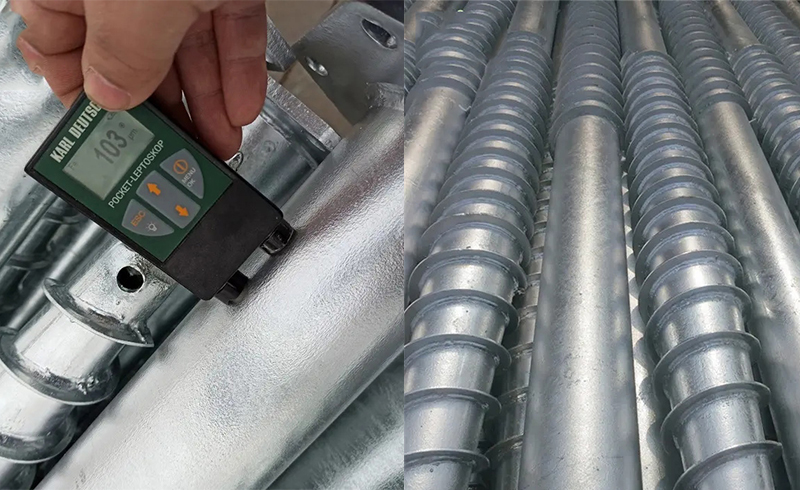Hot Dipped Galvanized Surface Treatment
2025-02-22Hot-dip galvanizing is to make the molten metal react with the iron matrix to produce an alloy layer, so that the matrix and the coating are combined. Hot-dip galvanizing is to first pickle the steel parts to remove the iron oxide on the surface of the steel parts. After pickling, they are cleaned in an ammonium chloride or zinc chloride aqueous solution or a mixed ammonium chloride and zinc chloride aqueous solution tank, and then sent to the hot-dip plating tank. Hot-dip galvanizing has the advantages of uniform coating, strong adhesion, and long service life.
Advantages:
1. Low processing cost: The cost of hot-dip galvanizing for rust prevention is lower than that of other paint coatings;
2. Save time and effort: The galvanizing process is faster and more time-saving than other coating construction methods, and can avoid the time required for painting on the construction site after installation;
3. Strong toughness of the coating: The galvanized layer forms a special metallurgical structure that can withstand mechanical damage during transportation and use;
4. Good reliability: The galvanized layer and the steel are metallurgically combined and become part of the steel surface, so the durability of the coating is more reliable;
5. Comprehensive protection: Every part of the plated part can be galvanized, even in recesses, corners and hidden places, it can be fully protected;
6. Durable: Hot-dip galvanized angle steel has the characteristics of surface gloss, uniform zinc layer, no leakage, no dripping, and strong corrosion resistance. In urban or offshore areas, the standard hot-dip galvanizing anti-rust layer can be maintained for 20 years without repair; in suburban environments, the standard hot-dip galvanizing anti-rust thickness can be maintained for more than 50-60 years without repair.
